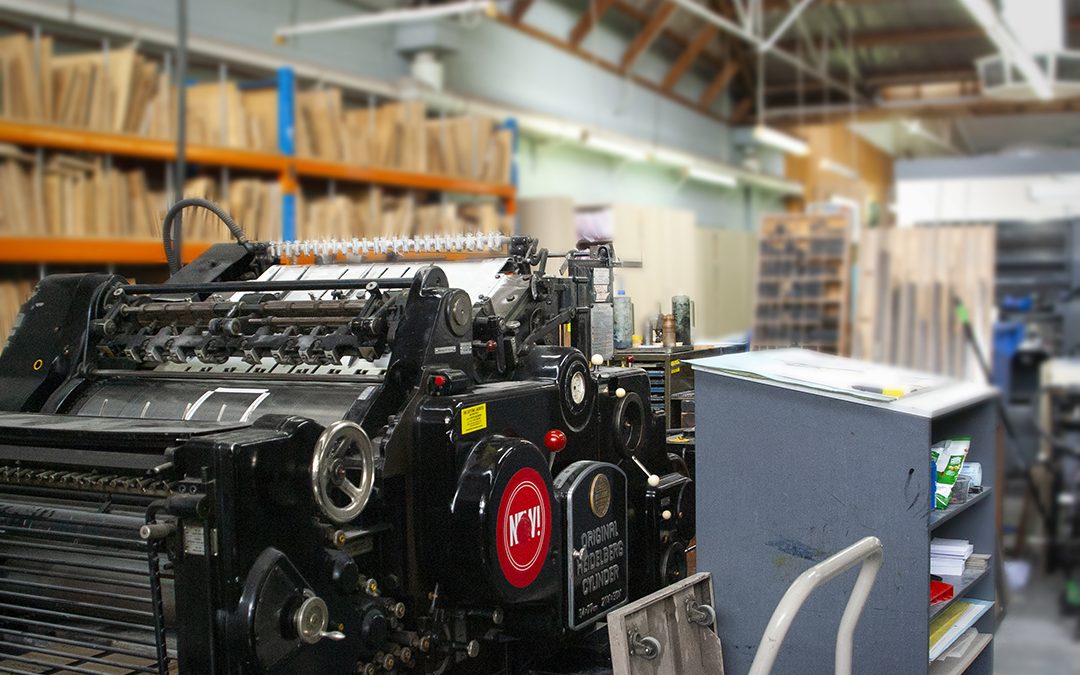What is the difference between offset and digital printing?
Digital and offset printing both have their pro’s and cons, depending on what you need for your business. It helps to have an understanding of what the differences are to help you decide on which method to choose. So what exactly is the difference between offset and digital printing?
What is offset printing?
This is the most common and traditional method of printing. Basically your artwork is transferred onto an aluminium plate (which we then recycle). The artwork is then transferred onto a rubber blanket and the rubber then rolls the image onto your paper. The ink isn’t transferred directly onto the paper, rather it goes through a process from computer to paper. This means the ink doesn’t move, and so, allows a high level of accuracy and crisp printing.
What is digital printing?
This method of printing does not use plates, which means it doesn’t go through a process like offset does. It transfers your artwork directly from computer to paper, using toner or liquid ink. Because it skips the long process, it is a much faster alternative for short print runs. Digital printing has come a long way over the years and new technology allows it to be an acceptable alternative to your business printing.
What are the advantages of offset?
Offset printing is more suitable for large printing jobs. A good rule of thumb is anything above the 1,000 quantity, offset should be considered. The larger the quantity, the lower the cost per unit. So think about options such as printing a high volume of “shells” that you can store and overprint different information as you need it. Offset also allows for speciality inks such as Pantone PMS, which ensure your corporate colours are consistent and your branding credible. Metallic inks can also be used to wow your customers. There is also a larger range of paper stocks that are compatible with offset, which allows you to choose the right paper for your project (read more about paper here).
What are the advantages of digital?
Digital printing is suited for smaller print runs, and you can print as little as 1 piece. This is perfect for small businesses or startup’s that only want a run of 100 flyers or 250 business cards. For print jobs that require variable data (personalised names, addresses or numbering etc…) you will need to use digital, as offset does not have these capabilities. This makes digital perfect for invitations or personalised letters (if you have a large run that requires variable data, this can still be achieved by overprinting your offset job). Small changes from one print run to the next are also very easy and inexpensive to do compared to its offset counterpart, which would require a new set of plates for any alterations.
Should I choose Offset or Digital Printing for my next job?
Basically it comes down to your individual needs as to whether offset or digital is better for you. Choose the method based on your quantity and the style. If you are printing thousands of items, offset is definitely the way to go, similarly, if you are concerned with brand consistency with corporate colours, or want to use a shiny metallic, offset should be your first choice. If you are printing shorter runs and require variable data, then digital is your answer.
We can give you some samples of both digital and offset just let us know! Or if you’re still unsure, just ask – we will be happy to help!


